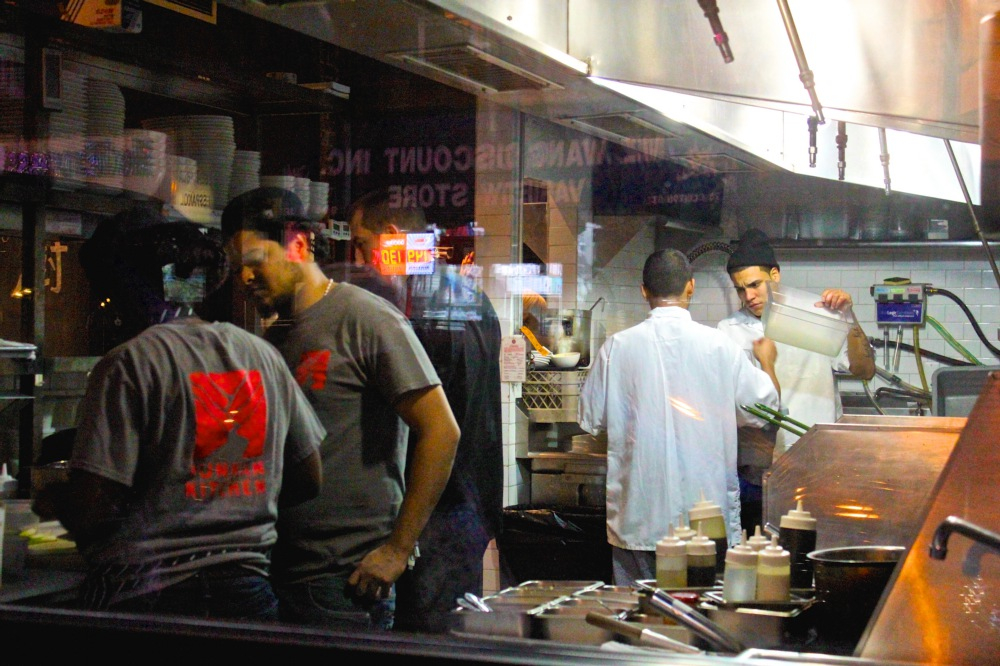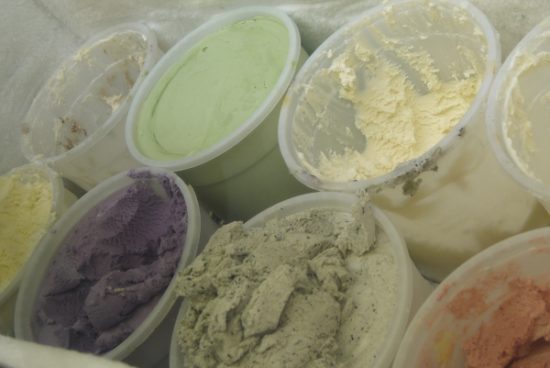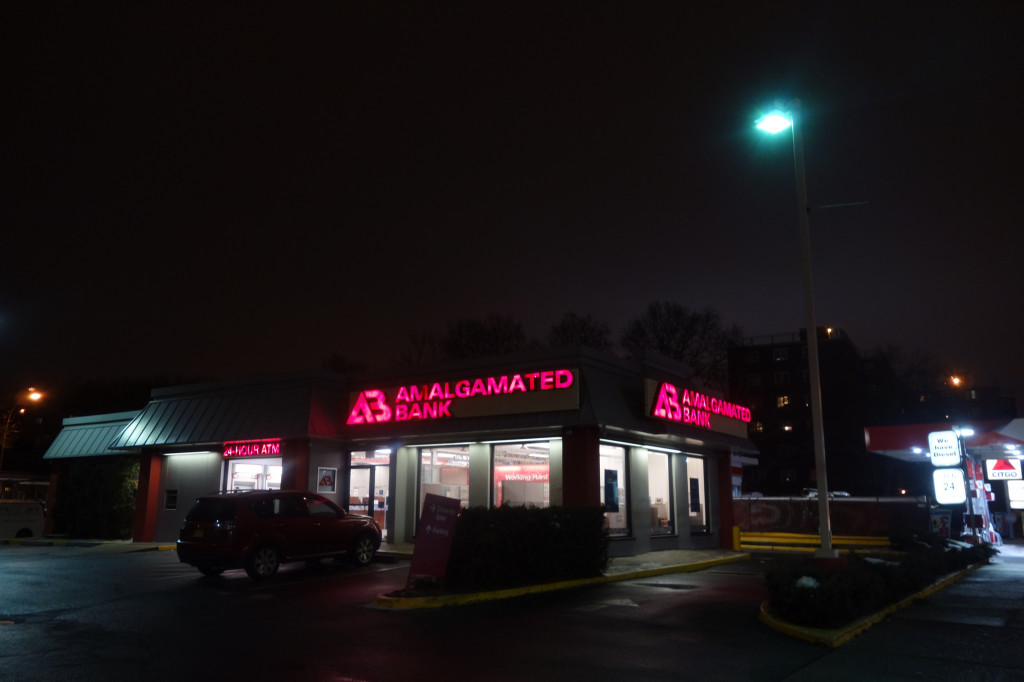About a decade ago, the New York City Department of Health and Mental Hygiene (DOH) began to puzzle over a strange and disturbing sight: whole, roasted ducks, hanging by their necks in the windows of Manhattan’s Chinatown.

March 11, 2014
About a decade ago, the New York City Department of Health and Mental Hygiene (DOH) began to puzzle over a strange and disturbing sight: whole, roasted ducks, hanging by their necks in the windows of Manhattan’s Chinatown.
“The health department had nothing to go with in terms of how they should react towards it,” recalled Kerwyn Mark, a former DOH health inspector.
Every time the inspectors came to Chinatown, the same routine played out. They would measure the temperature of the meat, find that it wasn’t held at the required 140 degrees or more, slap the restaurants with fines, and force them to throw the ducks away.
The cooks at these restaurants refused to keep the ducks at 140 degrees lest it dry out the meat. Restaurants complained to the community board, and the community board complained to the department. The dispute dragged on for years. Finally, the department sponsored a study on the ducks, and found that the method by which they were made was, as Kerwyn Mark put it, “pretty much foolproof.”
“The fact of the matter is that they cook the crap out of it, the skin is dry, they baste it when it’s up on the thing so there’s very little water activity, and the stuff underneath has been killed pretty good,” said Dave Arnold, a food science writer who owns Booker and Dax, a food and drink research lab, on Eldridge Street.
In 2011, the department finally instituted new rules that allow restaurants to keep ducks hanging for up to four hours from the point at which they reach 140 degrees. Restaurants can also opt to label one duck “display only” and prepare the ducks that are consumed by customers to order in the back of the house. Or, they can complete reams of paperwork and secure a bureaucratic certification called a HACCP (hazard analysis and critical control point) plan—originally a safety procedure created for NASA space flights and now applied in an unwieldy way to the food industry—which verifies that the preparation process is safe.
“The fact of the matter is that they cook the crap out of it, the skin is dry, they baste it when it’s up on the thing so there’s very little water activity, and the stuff underneath has been killed pretty good,” said Dave Arnold, a food science writer.
The ducks are no longer a red flag. Nonetheless, Chinatown’s relationship with the department remains an unhappy one—a fact that was underscored last fall when the Chinatown Business Improvement District (BID) announced that the community has 20 percent fewer restaurant A ratings than citywide. That means that just under half of Chinatown’s restaurants have a B or C grade. Citywide, 87 percent of restaurants have an A grade.

Since its introduction three years ago, in response to a number of food-safety scares—including 1,300 salmonella cases reported in 2008—New York City’s ABC restaurant grading scheme has been welcomed by the public and hailed by Michael Bloomberg for lowering salmonella outbreaks by 14 percent in its first year. Yet it has also been criticized by restaurateurs as confusing, arbitrary, and little more than a moneymaking racket for the city. In ethnic enclaves like Chinatown, the confusion surrounding the grading scheme can be compounded by language barriers, as well as a larger clash between tradition and bureaucracy.
The financial consequences are hefty. Even A restaurants pay an average $800 per year. B graded joints pay an average $2,800-4,200 each on fines and additional inspections (poor grades bring on more frequent visits from the department). A restaurant that earns a C will pay an average $6,000-10,000 per year.
In ethnic enclaves like Chinatown, the confusion surrounding the grading scheme can be compounded by language barriers, as well as a larger clash between tradition and bureaucracy.
Chinatown’s 293 restaurants paid $600,000 in inspection-related fines from July 2012 to March 2013, versus $30.3 million paid citywide—a disproportionately high amount for such a small community, according to Rada Tarnovsky the president of Letter Grade Consulting (LGC), a company that helps restaurants navigate the grading scheme.
The 10 Chinatown restaurants with C grades collectively paid $80,000 a year in fines, or on average $8,000 each.
Chinatown is not the only community disproportionately affected by the grading system. A Huffington Post analysis found that the percentage of Chinese, Indian, Korean, Latin American, and African restaurants with grades below A hovered around the 30s. Worse, 54 percent of Pakistani restaurants and 58 percent of Bangladeshi restaurants scored as such. (It’s worth noting that DOH’s online food protection course is available only in English, Spanish, and Chinese.)
Ducks have run afoul of the health code in other Chinatowns too. Frequent citations in LA during the early ‘80s provoked an outcry in the Asian community that resulted in the signing of the 1982 “Peking Duck bill,” exempting Chinese-style ducks from some aspects of the health code. In 1993, the Philadelphia Inquirer published a piece by Ginny Wiegand titled “Chinatown Restaurants Brace for City Quackdown.” And in 2008, at least 10 restaurants in London’s Chinatown had to briefly stop selling Peking duck due to new EU regulations on ovens.
“Mostly you will see it’s ethnic communities that have less A grades and more B grades,” said Tarnovsky.

Different cuisines encounter different problems. Many Asian restaurants cook enormous batches of rice, which sit around too long for the department’s liking. LGC recommends they cook rice in smaller batches, to better regulate its temperature. Elizabeth Meltz, Mario Batali’s food safety overseer, told the New York Times that she has dealt with inspectors who seemed unfamiliar with kimchi, which is literally spoiled cabbage but safe to eat. Raw fish is an issue in Japanese restaurants, as is glove wearing, or the lack thereof. Many chefs refuse to wear them, though they are required to, because the latex taste gets into the fish and it’s hard to do fine knife work in gloves.
“There are some very clean sushi practices that will knock you from an A to a B, and if the chef is particularly inflexible about deviating from what they think is the best sushi in the world, you could have a really good sushi restaurant with a B,” said Dave Arnold, the food science expert.
And kosher bakeries, for their part, get fined for food handlers without beard restraints.
In recent years, the biggest points of contention between restaurants and the department have been charcuterie and low-temperature sous vide cooking. Sous vide, a cooking method that involves keeping foods in sealed plastic at very low temperatures, has been popular in Europe since the late ‘70s but was the target of a massive health department sweep in 2006, which began with David Chang’s Momofuku Noodle Bar, and hit such high-profile restaurants as the three-Michelin-starred Per Se.
Sous vide and charcuterie get a lot of headlines because they involve high-end, politically powerful restaurants. One industry insider who declined to be named said he believed David Chang had been the first to get hit in the sous vide sweep because he wasn’t famous at the time. “…they went apeshit on him—made him cut open his food and pour bleach on it.” From there, he said, “they told everyone they had to stop doing it, and when they realized they had hit all these top restaurants, there was a big outcry.”
When you step away from the headlines, however, the biggest challenge for any restaurant is simply dealing with the bureaucracy.
And consider the rumors surrounding Per Se, whose owner is a friend of Michael Bloomberg. The New York Post claimed it had its grade changed from a B to an A in 2012 following a phone call from the restaurant’s manager. (It may have gotten its comeuppance this month, however—the establishment just made headlines for earning a C rating.)
When you step away from the headlines, however, the biggest challenge for any restaurant is simply dealing with the bureaucracy.
“Things like sous vide and charcuterie are such a small percentage of the problem. The things you’re going to get dinged on is like, having a cardboard box on the ground,” said one food industry insider (who also said he “may or may not” have been involved with helping one prominent restaurant hide its sous vide machine in trash cans when inspectors showed up). “That’s what’s going to get you.”
“It really varies from inspector to inspector. Some people pick on construction details, other people pick on all the food stuff,” said Erika Chou, general manager of Yunnan Kitchen, from the dining room of the Lower East Side establishment. For the record Yunnan Kitchen has an A, but got fined for not having self-closing bathroom doors. “There’s so much inconsistency in that. How can you really trust the rating?”

On top of all this, Chou says that it’s not even clear how one keeps up with new regulations as they emerge. “I think a new regulation is you can’t have pre-cut tomatoes out, you have to slice them to order, and that has to do with—honestly I don’t remember, because that doesn’t make any sense to me,” she said. Asked how she might confirm this info, she shrugged. “I have no idea. You probably have to check their websites for updates or something but even so it’s not very clear. You hear about these things through other people who work in the industry.”
“I don’t think anybody’s really happy about the rating system,” she said.
“I think a new regulation is you can’t have pre-cut tomatoes out, you have to slice them to order, and that has to do with—honestly I don’t remember, because that doesn’t make any sense to me,” said Erika Chou.
These were the words of a 20-something, internet-savvy restaurateur with an A rating, in the know with other plugged-in industry folks. Woe to the new immigrant navigating the vagaries of an unfamiliar city bureaucracy.
“The health department has to write rules that an inspector who doesn’t know how to cook can apply in every case—not just in a 4-star restaurant, not just in a duck joint in Chinatown,” said Dave Arnold. “So there’s lots of things that can be done safely that aren’t included in the rules, and there’s lots of stuff that doesn’t make sense.”

To address the confusion, the Chinatown BID hosted a free seminar last October on how to earn—or maintain—a restaurant A rating. Kerwyn Mark, the former health inspector, and other representatives from Letter Grade Consulting (LGC) explained the inspection process to about 20 Chinatown restaurant operators. For about an hour, they outlined common violations: rags left outside buckets (5 points each), dirty aprons (5 points each), not using food thermometers correctly (8 points), condensation on pipes (promotes moisture, which promotes food spoilage). The limit for keeping an A is 13 points, which means just 3 rags left sitting on a counter, and not in a bucket full of sanitizer solution, can earn you a B. Then, the speakers moved on to an issue specific to Chinatown: ducks.
Until now, the crowd had largely remained quiet. Some took notes in Chinese, while others snapped photos of the Powerpoint presentation with their smartphones. Now, several hands shot into the air.
“What if we leave the ducks out for three hours instead of four?” one man asked in English.
“What about a duck we marinate for two hours then fry? Can we leave it out while it’s marinating?” said a woman in Cantonese. Earlier, she had complained of several run-ins with the department.
“You need a HAACP plan,” said Kerwyn Mark. Then he tried to explain what a HACCP plan was. Everyone looked puzzled, your correspondent included.
Then, the speakers moved on to an issue specific to Chinatown: ducks. Until now, the crowd had largely remained quiet… Now, several hands shot into the air.
Despite the decades of bureaucratic activity directed towards ducks in Chinatown, it seemed that confusion still reigned.
In the meantime, the fines keep adding up. It’s worth noting that there is a tribunal through which low grades can be appealed and fines sometimes lowered. When a restaurant has a “Grade Pending” in the window, that means they are in the process of appealing a grade. But, appealing is a luxury for those who can afford to take the time off work to appear before the tribunal, let alone pay for lawyers. Rada Tarnovsky of LGC noted that many owners and operators in Chinatown, when confronted by fines or settlements in the mail, paid them without question. They also tended to show up at the tribunals by themselves, with no lawyer, and without any documents in hand. Many of the settlements paid, Tarnovky said, “probably should not have been accepted.”
“People are generally intimidated by the system and would usually just pay the fines rather than challenge it,” said Patrick Kwan, a spokesperson for the Chinatown BID, by email. “The thing is the restaurants may not realize how big of an impact the letter grade system is to their business.”
For all restaurants, that impact will only continue to increase. Eighty percent of New Yorkers now consider a restaurant’s letter grade when eating out, according to a 2012 Baruch College and DOH survey. And revenue rises at higher-lettered restaurants and decreases at lower-lettered ones, according to a recent Stanford study. Meanwhile, the popular user review website Yelp announced last year that it would start to include health department ratings on restaurant pages. And at the Chinatown seminar, restaurateurs were warned that the NYC DOH now has an iPhone app that allows people to instantly look up inspection reports.
And consider the remarks that Michael Bloomberg made at an uptown gala event that took place on the very same day as the Chinatown seminar.
“Those that don’t want to clean up their kitchen, I know why they’re bitching,” he said. “But I would suggest: don’t eat in a restaurant unless they have an ‘A.’”




